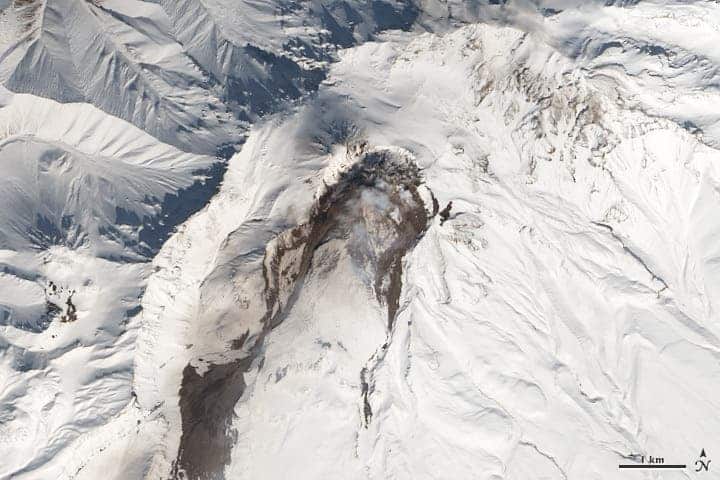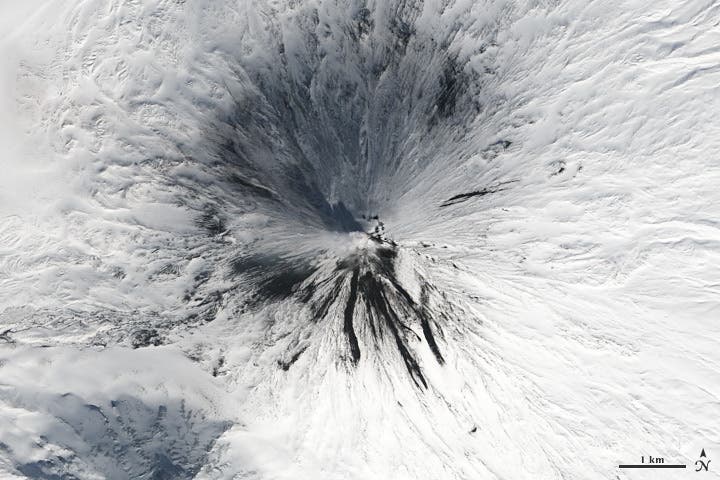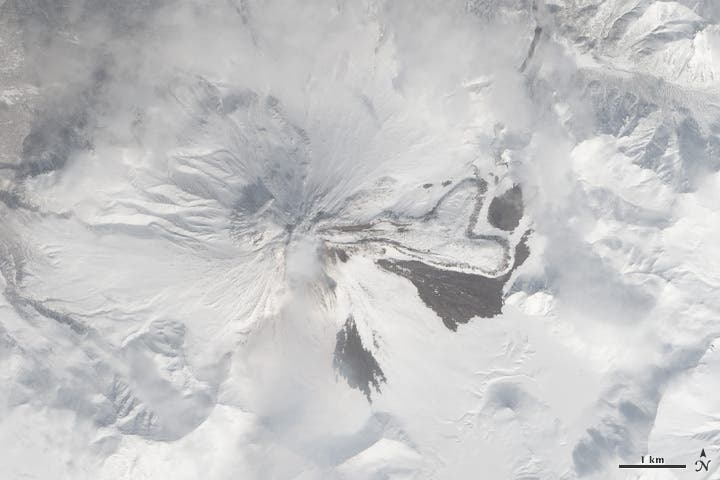
Remote, cold, rugged, and fiedy – that’s the Kamceatka Peninsula for you! Out of all the 1,550 volcanoes that have erupted in the recent geologic past, 113 are found on Kamchatka. Of those, 40 Kamceatkan volcanoes are active, either erupting now or capable of erupting anytime, without any notice. The Operational Land Imager (OLI) on the Landsat 8 satellite captured activity at five of them during a single satellite pass on April 14, 2014.

The volcanoes you see in this page, are, from North to South: Shiveluch, Klyuchevskaya, Bezymianny, Kizimen, and Karymsky. The tallest of the group is Klyuchevskaya, a stratovolcano which stretches 4,750 meters (15,580 feet) above sea level. However, the most active of the group is Karymsky, a 1,536-meter (5,039-foot) volcano which erupted more or less constantly since 1996.

The volcanoes from Kamceatka are tectonic volcanoes, not caused by a hotspot, like Hawaii or Yellowstone. Basically, the Pacific Plate is subducting below the small Okhotsk Plate. As the rock from the Pacific Plate goes down more and more, it moves on to higher temperatures and pressures, melting into magma. Overtime, the magma accumulates, it starts to move up the gaps and cracks at the edge of the tectonic plates, causing volcanic eruptions.

Interestingly enough, there are also many creation stories and myths about the areas. The Koryak people believed that the raven god Kutkh created Kamchatka by dropping a giant feather on the Pacific Ocean. Each of the first generation of men became one of Kamchatka’s mountains. But Kutkh created many things, including a very beautiful woman – some of the first men were so passionate that even after they turned to mountains, their hearts still burned with the passion – and they are the volcanoes. It’s a really nice story, like many Koryak myths, but unfortunately, it has little to do with plate tectonics.

For more details and full resolution check out the NASA article.






